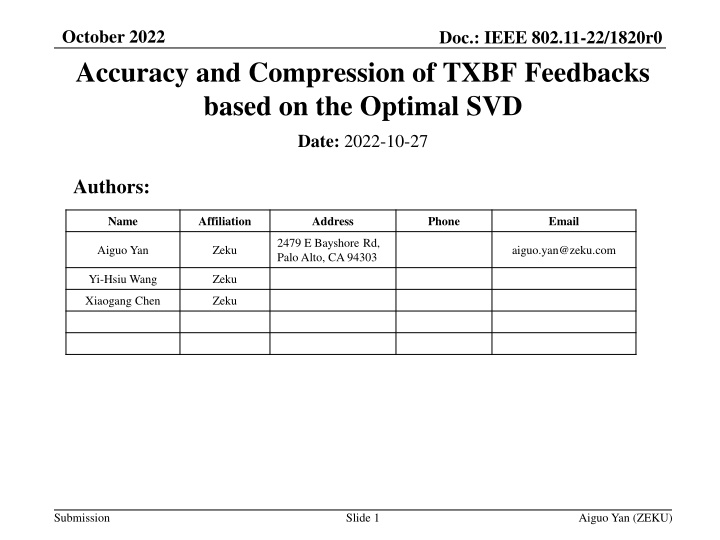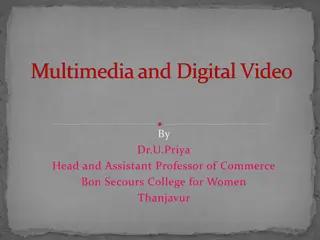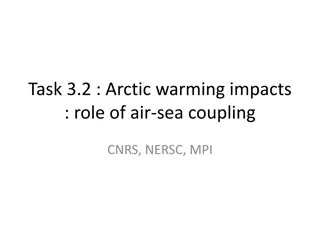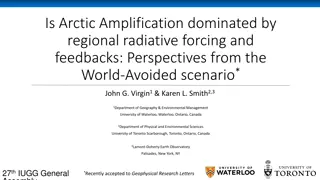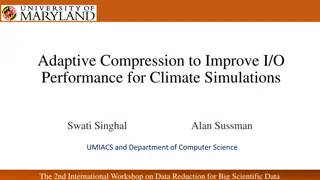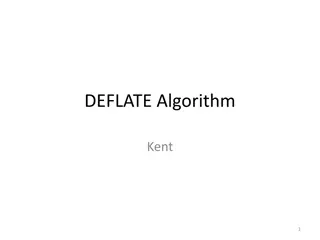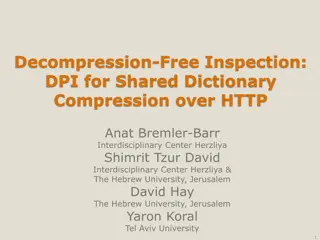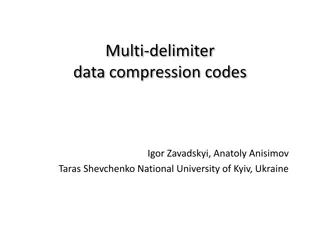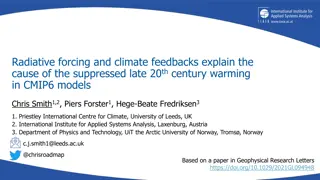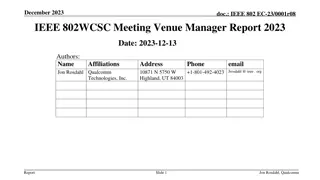IEEE 802.11-22/1820r0: Accuracy and Compression of TXBF Feedbacks
This document discusses the accuracy and compression of Transmit Beamforming (TXBF) feedbacks based on Optimal Singular Value Decomposition (SVD). It covers the background, optimal SVD-based TXBF feedback (Decimation), simulation results, and proposals for overhead reduction schemes in the context of feedback reduction. Various existing and additional overhead reduction proposals are presented and analyzed to improve efficiency and performance in wireless communication standards.
Download Presentation

Please find below an Image/Link to download the presentation.
The content on the website is provided AS IS for your information and personal use only. It may not be sold, licensed, or shared on other websites without obtaining consent from the author.If you encounter any issues during the download, it is possible that the publisher has removed the file from their server.
You are allowed to download the files provided on this website for personal or commercial use, subject to the condition that they are used lawfully. All files are the property of their respective owners.
The content on the website is provided AS IS for your information and personal use only. It may not be sold, licensed, or shared on other websites without obtaining consent from the author.
E N D
Presentation Transcript
October 2022 Doc.: IEEE 802.11-22/1820r0 Accuracy and Compression of TXBF Feedbacks based on the Optimal SVD Date: 2022-10-27 Authors: Name Affiliation Address Phone Email 2479 E Bayshore Rd, Palo Alto, CA 94303 Aiguo Yan Zeku aiguo.yan@zeku.com Yi-Hsiu Wang Zeku Xiaogang Chen Zeku Submission Slide 1 Aiguo Yan (ZEKU)
October 2022 Doc.: IEEE 802.11-22/1820r0 Outline 1. Background 2. Optimal SVD based TXBF Feedback (Decimation) 3. Simulation Results 4. Summary and Recommendations 5. References Submission Slide 2 Aiguo Yan(ZEKU)
October 2022 Doc.: IEEE 802.11-22/1820r0 Background Background of the Optimal SVD [WNG01] 1. We had a high-level presentation in WGN in Sept/2022 2. We received many suggestions/comments/questions. 3. Many were eager to see simulations results Background on TXBF Feedback Overhead Reduction 1. In last decade, Many contributions emphasized importance of overhead reduction and proposed ways to reduce these overheads. But none of these ideas got into standards. [BFOR01] 2. Recently, CSI Feedback Overhead Reduction was proposed as the top use cases in AIML-TIG meeting. [BFOR02/03] 3. CSI Feedback Overhead Reduction was also one of top use cases in 3GPP/5GNR AI/ML activities. Slide 3 Submission Aiguo Yan (ZEKU)
October 2022 Doc.: IEEE 802.11-22/1820r0 A Subset of Existing Proposals on Overhead Reduction Scheme Pros Cons 1 only feedback exists in 802.11ah single data stream only may need additional signaling to identify tap positions and the extra matrix 2 time domain channel exists in 802.11ad/ay Simple improvement from 802.11ax, variant in 11ay simple improvement from 802.11ax Well understood, reduced feedback overhead Well understood, reduced feedback overhead Do not need calibration, reduced feedback overhead 3 Differential Givens Rotation Additional processing, Error Propagation 4 Variable Angle Quantization additional processing 5 Multi-component Feedback May need additional design 6 Codebook based Feedback May need additional design 7 Two way channel training May need additional design 8 Implicit Feedback Simple improvement from 802.11nNeeds calibration The Table is from 11-19-0391-00-0eht-feedback-overhead-reduction-in-802-11be.pptx (Komi Oteri and et al.) Submission Slide 4 Aiguo Yan (ZEKU)
October 2022 Doc.: IEEE 802.11-22/1820r0 Additional Overhead Reduction Proposals 11-15-1347-00-00ax-strategies-to-reduce-mimo-feedback-overhead.pptx, [Filippo Tosato and etl of Toshiba] 11-15-1129-01-00ax-feedback-overhead-in-dl-mu-mimo.pptx, [Filippo Tosato and etl of Toshiba] Cosine-sine Decomposition Grassmannian Representation 11-20-0041-00-00be-additional-overhead-reduction-in-mixed-beamforming- feedback.pptx; [Genadiy Tsodik and etl of Huawei] Sub-band Method 11-19-1018-01-00be-feedback-overhead-reduction.pptx; [Wook Bong Lee and etl of Samsung] 11-19-1495-02-00be-further-discussion-on-feedback-overhead-reduction.pptx [Wook Bong Lee and etl of Samsung] Dimension Reduction Submission Slide 5 Aiguo Yan (ZEKU)
October 2022 Doc.: IEEE 802.11-22/1820r0 Optimal SVD Based Feedbacks (hide standards-related details temporarily) Optimal SVD: 1. SVD is not unique. 2. Choose a SVD that meets our pre-defined optimization criteria. = = = H H H H U SV U SV U SV BF Feedback { ? ? } Preference: Smoothness of ( ) V k : ( ) Feedback V k Raw Channel { ? ? } BFer BFee : ( ) ( ) BFedChannel H k V k BFed Channel { ? ? ? ? } Submission Slide 6 Aiguo Yan (ZEKU)
October 2022 Doc.: IEEE 802.11-22/1820r0 Essences of Compressive TXBF Feedbacks 1. Decimation (indicated by the parameter Ng) and Re-construction of V matrices a) Decimation is one of key compression methods b) This is the focus of this contribution c) Goal is to minimize error caused by decimation, 11ac: Ng = 1, 2 or 4; 11ax/be: Ng = 4 or 16 2. Angle { , } Extraction from V not considered 3. Quantization not considered Submission Slide 7 Aiguo Yan (ZEKU)
October 2022 Doc.: IEEE 802.11-22/1820r0 Current Situation in Standards and Potential Changes The Normalized V matrices (i.e., the last row is non-negatively real) are feedbacked The best V matrices for V re-construction are often not the normalized V matrices Potential Changes Enable feedback of the Optimal V matrices Submission Slide 8 Aiguo Yan (ZEKU)
October 2022 Doc.: IEEE 802.11-22/1820r0 Reconstruction of V Matrices in TXBFers 1. There is no restriction on how a TXBFer should reconstruct the SU V (precoding) matrices based on received feedbacks. Many researchers did propose different ways. We easily summarized 7 potential ways for reconstruction, even with a simple 1st order linear interpolation There are also multiple ways to calculate errors It is also very important/beneficial for TXBFee to know the accuracy of the reconstructed V (or precoding) matrices Would like to feedback in such a way that TXBFees have high confidence of reconstruction accuracy regardless of methods used by TXBFers!!! 2. 3. 4. 5. 6. Submission Slide 9 Aiguo Yan (ZEKU)
October 2022 Doc.: IEEE 802.11-22/1820r0 Simulation Assumptions 11ax; 20MHz; Channel D and B Ng = 4 or Ng = 16 according to 11ax specs Ng = 2 is the new proposal The simple linear interpolation is assumed SNR is defined as below Recontruction Decimation : ; : beingUnitary & Diagonol SNR D I SNR D = 2 2 10log , self-noise SNR E V E V VD 10 ( ) V = ;Simple Linear Interpolation V 2 1 Note: SNR here is not a perfect indicator, but it provides reasonable mathematical guidance. For example, 11be 4KQAM needs SNR of 30+dB; RF IRR needs to be better than -50dBc. Error of V doesn t impact PER the same way as other imperfections normally do. So we have to use these numbers with a grain of salt Submission Slide 10 Aiguo Yan (ZEKU)
October 2022 Doc.: IEEE 802.11-22/1820r0 Observation with Channel-D (SNR2) Ng=04 Ng=02 Ng=16 Assuming a threshold/requirement of 30dB; ~50% of time with Ng=4, (or ~20% with Ng=2), can t meet the requirement. Potential Problem? Submission Slide 11 Aiguo Yan (ZEKU)
October 2022 Doc.: IEEE 802.11-22/1820r0 Observation with Channel-D (SNR1) Ng=04 Ng=16 Ng=02 Assuming a threshold/requirement of 30dB; ~35% of time with Ng=4, (or ~10% with Ng=2), can t meet the requirement. Submission Slide 12 Aiguo Yan (ZEKU)
October 2022 Doc.: IEEE 802.11-22/1820r0 Observation with Channel-B (SNR2) Ng=04 Ng=02 Ng=16 Optimizing V seems much more efficient than halving Ng, ChanD/B Submission Slide 13 Aiguo Yan (ZEKU)
October 2022 Doc.: IEEE 802.11-22/1820r0 Observation with Channel-B (SNR1) Ng=04 Ng=02 Ng=16 Optimizing V seems much more efficient than halving Ng, ChanD/B Submission Slide 14 Aiguo Yan (ZEKU)
October 2022 Doc.: IEEE 802.11-22/1820r0 Overhead Calculation (# of Angles) Normalized Optimal +Overhead 20% 7.7% 3.0% 9.1% 3.7% 04TX2RX 10 08TX2RX 26 16TX2RX 66 08TX4RX 44 16TX4RX 108 10+2 26+2 66+2 44+4 108+4 Pros/Cons of falling back to 11ac with Ng = 01 ? Submission Slide 15 Aiguo Yan (ZEKU)
October 2022 Doc.: IEEE 802.11-22/1820r0 Summary and Suggestions Introduced essences of Optimal SVD (and GMD), and TXBF feedback schemes based on the Optimal SVD (and GMD). Shared simulation results of the Optimal SVD based TXBF Feedbacks. Exposed a potential limitation of existing TXBF feedback scheme??? Suggested options (mainly following existing method for minimum modifications) for the community to think about. 1. 2. 3. 4. 1) Reduce Ng (increase accuracy and significant overhead); 2) Enable feedback of the optimal V matrices; (increase significant accuracy and small overhead); 3) Both (1) and (2), specially for next gen cases demining higher accuracy (increase significantly both accuracy and overhead); 4) Will change quantization as a natural consequence if needed Submission Slide 16 Aiguo Yan (ZEKU)
October 2022 Doc.: IEEE 802.11-22/1820r0 Selected References 1. [WNG01]: 11-22-1413-01-0wng-thoughts-on-high-reliability-communications , [Aiguo Yan and et al of Zeku] 2. [WNG02]: 11-22-0708-03-0wng-beyond-be-next-step, [Rolf De Vegt and et al of Qualcomm] 3. [WNG03]: 11-22-0418-00-0wng-considerations-of-next-generation-beyond-11be.pptx (Jianhan Liu and et al of MediaTek). 4. [TXBF01]: C. Shen and M. P. Fitz, "MIMO-OFDM Beamforming for Improved Channel Estimation," in IEEE Journal on Selected Areas in Communications, vol. 26, no. 6, pp. 948-959, August 2008, doi: 10.1109/JSAC.2008.080811. 5. [TXBF02]: W. Hu, F. Li and Y. Jiang, "Phase Rotations of SVD-Based Precoders in MIMO-OFDM for Improved Channel Estimation," in IEEE Wireless Communications Letters, vol. 10, no. 8, pp. 1805-1809, Aug. 2021, doi: 10.1109/LWC.2021.3081583. 6. [TXBF03]: E. Jeon, M. Ahn, S. Kim, W. B. Lee and J. Kim, "Joint Beamformer and Beamformee Design for Channel Smoothing in WLAN Systems," 2020 IEEE 92nd Vehicular Technology Conference (VTC2020-Fall), 2020, pp. 1-6, doi: 10.1109/VTC2020-Fall49728.2020.9348441. 7. [TXBF04] F. Jiang, Q. Li and X. Chen, "Channel Smoothing for 802.11ax Beamformed MIMO-OFDM," in IEEE Communications Letters, vol. 25, no. 10, pp. 3413-3417, Oct. 2021, doi: 10.1109/LCOMM.2021.3099167. 8. [BFOR01]: 11-19-0391-00-0eht-feedback-overhead-reduction-in-802-11be.pptx (Komi Oteri and et al of InterDigital) 9. [BFOR02]: 11-22-1563-02-aiml-ai-ml-use-case, [Zinan Lin of InterDigital] 10. [BFOR03]: 11-22-0950-02-aiml-discussion-on-interaction-between-ai-ml-wireless-lan, , [Zinan Lin of InterDigital] Submission Slide 17 Aiguo Yan (ZEKU)
